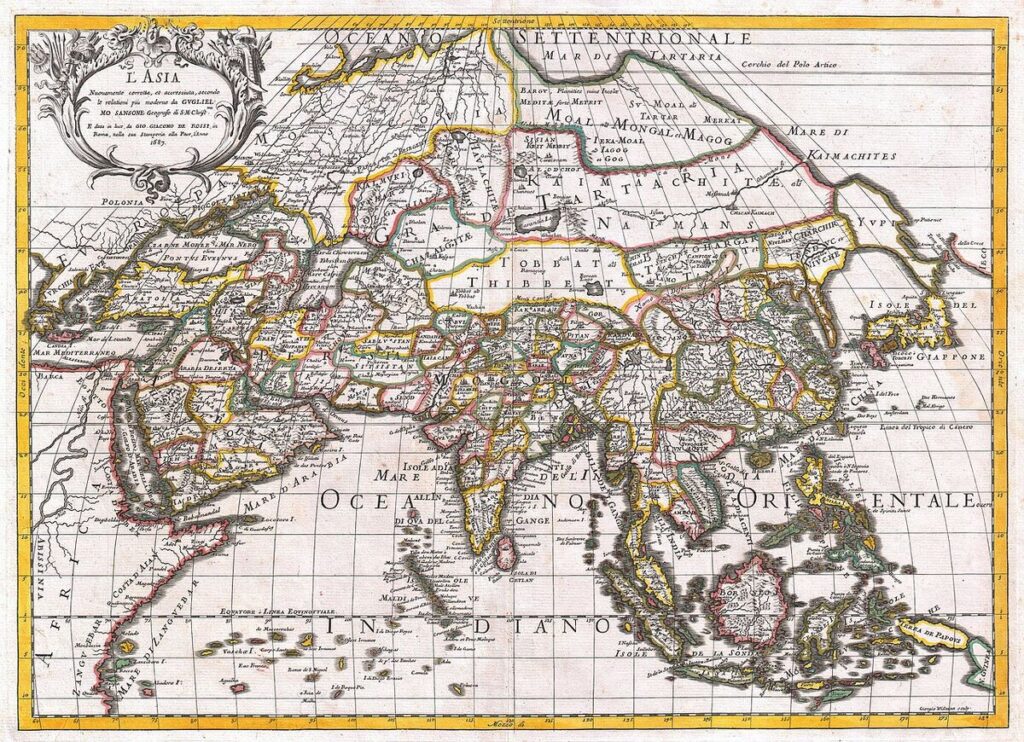The Naimans were one of the most important tribes that existed in Central Asia in the period from IX to XIV centuries. They are known as powerful warriors and nomads, and their influence extended from Siberia to Central Asia.
The Naimans played a significant role in the history of the region, especially during the Mongol Empire. They were one of the important allies of Genghis Khan, actively participated in his conquests. After the collapse of the empire, some Naiman clans continued to resist the Mongols and maintain their independence.
However, over time, the Naimans were absorbed by other tribes and peoples, and their cultural and ethnic heritage was gradually lost. Currently, the heritage of the Naimans is preserved in historical and archaeological research, in folk legends and legends.
Thus, the Naimans were an important tribe that played a significant role in the history of Central Asia and the Mongol Empire. However, with the passage of time and changes in the political and cultural environment, their role and influence have declined, and they have become part of the historical heritage of this region.

The Naymans on the map by Giovanni Giacomo De Rossi. 1687
The ethnonym itself goes back to the meaning of 8. That is, the union of eight tribes.
Among the Turks, in the VII-VIII centuries there was a confederation of 8 Oghuz tribes.
The ethnonym is also associated with the river in Altai — Mima. There is a seok (genus) Maiman in Altai. He is even considered to be the original family from which the Naimans came.
In the legends of the Nayman, Altai also appears as their ancestral homeland. They were allegedly led out by a golden eagle and a dog. In this regard, these creatures are totemic and sacred to Naiman. The dog protects the naiman on the ground, the golden eagle in the sky.
Scientists derive naiman from the border region between Western Mongolia and Eastern Kazakhstan. They alternately entered the:
The Turkic Khaganate
The Eastern Turkic Khaganate
The Uighur Khaganate
Kyrgyz Khaganate
of the Khitan State
Therefore, the formation of Naiman took place in a mixed Mongol-Turkic environment. Their rulers also bore the title of Khans.
Nevertheless, despite the opinions that the Naimans are Turks, most authoritative scientists like V. Bartold, I. Petrushevsky, L.Gumilev and G. Potanin considered them Mongols:
The Khitan were an eight-tribe people, and the word Naiman means «eight» in Mongolian. Only proper names and «cultural words» have been preserved from the Naiman language. Both are most often borrowed from neighbors. But we do know that when faced with the Keraites and Mongols, the Naimans explained themselves perfectly to them, which speaks about their Mongolic language. And how could the Mongolian-speaking nomads get to Altai in the second half of the XII century? Only together with the Khitans, but rather, as part of the Khitans, associates of Yeluy Dasha — L.N.Gumilev
Even before Genghis Khan, the Naiman sovereigns were Narkysh-Tayan and Enyaat-kaan. They defeated the Kyrgyz tribe. Buyuruk and Thayan were the sons of Enyaat-kaan. The Naiman tribes were nomadic, some lived in mountainous areas, and some in the plains. They had a large and good army; their customs and habits were similar to those of the Mongols — medieval encyclopedic scholar Rashid al-Din
Chinese sources of the XII-XIII centuries also considered the Naimans Mongols. They were attributed to the white Ongut Tatars.
At the same time, the Naimans themselves did not consider themselves either Turks or Mongols. It was an absolutely original ethnic group, which had its own statehood, language, writing, developed farming skills, and an urban lifestyle (in the settlements of Naiman there were water pipes, baths, reading rooms). They were also considered magicians and sorcerers who could send a storm at the enemy.
Later, the Naimans in language always differed in dialect from the Mongols. B.Ya.Vladimirtsev generally believed that the literary Mongolian language could be an ancient Naiman dialect.
Genetically, naiman is dominated by O2A2B1 (42%), followed by C2, R1A1, R1B1, N.
The Naimans themselves appeared on the historical scene in the middle of the VIII century. The Segiz-Oguz revolted against the Uighur khaganate and separated from it. Also, then 9 Tatar tribes separated from the khaganate.
After the formation of the Kyrgyz Khaganate, Chinese sources mention the Tzuba, who are identified with the Naimans.
In the IX-XII centuries, the Zubu waged war with the Khitan Liao Empire. In 1125, the Liao disintegrated and the Naimans gained great weight in the Great Steppe. But now the Keraites have become their enemies.
Inanch Khan is considered one of the most powerful rulers of the Naimans.

Inanch Khan, Inanch-Bilge-Buku Khan, Enyat Khan (? — 1198, 1200 or 1202) was a ruler of the Naimans who lived during the time of Genghis Khan. After his death in about 1198 (1200 and 1202 are also sometimes indicated), the Naiman state split into two ulus headed by Buyuruk Khan in Altai and Tayan Khan on the Black Irtysh
After the death of Inanch Khan, his two sons Buyuruk and Tayan divided their father’s state into two parts. They will be at enmity, which Temujin will take advantage of.
The Naimans are defeated and, led by the son of Tayan Khan, Kuchluk, flee to Central Asia, to the gurkhan of the Kara-Khitan Yelyu Zhulhu. Kuchluk became a gurkhan after the latter’s death. And he began to take revenge on the Mongols as best he could. The Mongols marched against him and he was caught by local Muslims, beheaded for their previous oppression.
This was the end of the political history of the Naiman and they became part of the Mongol Empire. They have not disappeared anywhere and now exist as numerous clans in many Turkic and Mongolian ethnic groups
